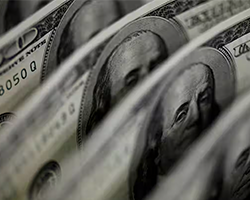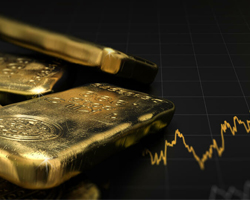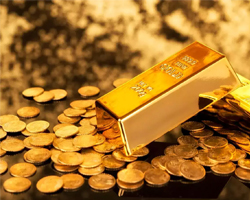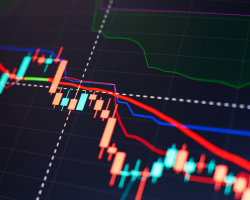Gold Price Forecast and Price Predictions: 2021 And Beyond
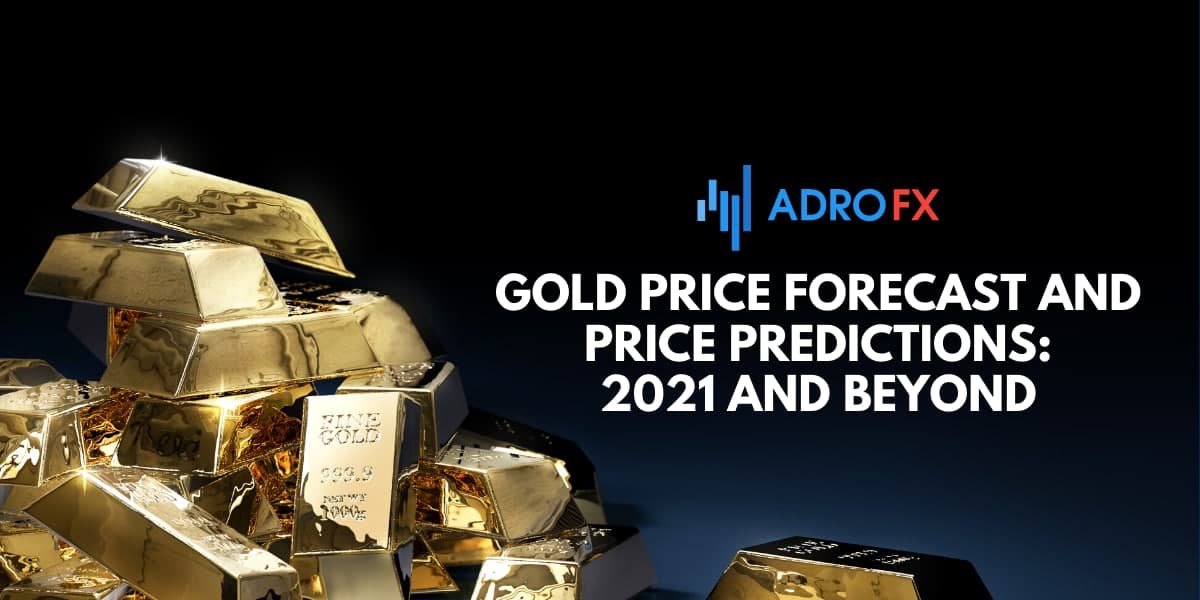
Since it was first used as currency 5,000 years ago, gold has remained the most recognizable symbol and store of wealth. Today, gold's rarity, its universal appeal as a safe haven asset, and the ever-increasing demand from investors and central banks have made it a sensible inclusion in any investment portfolio. So, is gold still a good investment option given the current global economic and political climate? What are gold prices predictions for the future?
In this article, we will try to answer those questions, and will look at some of the historical aspects and technical picture of this asset.
Gold Price Today
That's for whom 2020 was really successful, so it's for gold. Contrary, or rather thanks to COVID, everyone mentioned gold. Against the background of falling rates and the fall of the dollar, the yellow metal returned to the international arena as the main safe-haven asset against financial cataclysms.
Because of the high interest of Western investors, the gold exchange rate reached its maximum mark of $2,073 in August 2020. Back in the summer of 2018, it was at a minimum level of $1,160. This growing trend allowed precious metal to become the most attractive financial asset on the global market. The capital volume of the gold ETF reached $60 billion, twice as much as in 2009 (the period of the global financial crisis).
During the pandemic, investors realized that gold must be included in their portfolios and became an effective tool for hedging volatility. The asset broke all buying records, as it allowed them to protect themselves from the risks of deflation.
The current situation in international markets suggests that the world is returning to the times of the "gold rush". The economic storm in the markets caused by COVID refutes the hypothesis of gold as a "relic of the past." As long as the economic crisis continues, the yellow precious metal remains the main protection and insurance against inflation.
At the moment, all markets are consolidating due to the summer season of low demand, lower activity, and doubts about the continuation of the USA Federal Reserve's stimulus programs. Support will be provided by the growth of inflation expectations and released inflation data. Gold may advance to the levels of $1,860-1,913.
Undoubtedly, the main factor influencing the cost of precious metals is the policy of regulators. If they start to tighten in response to inflation, prices may go down. Stabilization of the situation with COVID-19 will also have a calming effect on the markets and a negative effect on prices.
However, in the case of reflation (high inflation with stagnant economic growth), starting from 2022, prices of precious metals are likely to continue rising. And if the soft policy of regulators continues, prices of base metals may also increase. The markets are now at a turning point. It is not clear what factors will prevail. In our turn, we do not expect a significant decline in prices, but we do not expect growth either.
Gold Price Prediction for 2021: What Do Experts Predict?
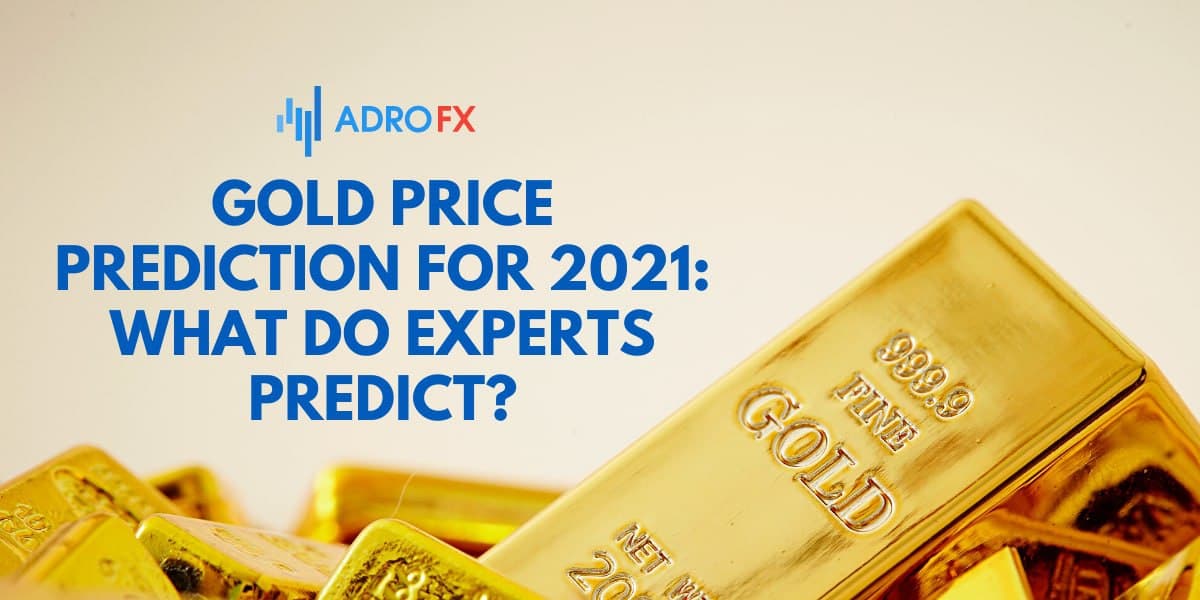
Analysts agree that regardless of the rate of vaccine distribution, the world needs time to recover from the losses. This means that for investors and central banks, gold will remain more than a relevant asset in 2021. Experts from Canadian and German banks do not rule out that during the year the yellow precious metal will approach a new record high of $ 2,000 per ounce. Meanwhile, American analysts are more restrained in their forecasts. According to them, the beginning of vaccination and the less conflicting trade policy of the new US President George W. Biden may help restore business activity in the markets, which stabilizes gold prices.
- The first scenario: $2,200 and above
Such optimistic forecasts are expressed, in particular, by the German banking conglomerate Commerzbank. According to the financial institution, in 2021 gold may reach a record figure of $2,100. But experts from the Australian bank ANZ do not rule out that the peak value will be $2,300 per ounce.
- The second scenario: $2000 is the limit
Capital Economics experts are more restrained in their assessments. Thus, the company's analyst Samuel Berman believes that by the end of the year gold will stabilize in price at $1,900. This will be facilitated by the less conflicting trade policy of the new US President George W. Biden, as well as the resumption of world consumption against the background of vaccination. Peter Haag, CEO of Global Trading, believes that factors that could potentially change the current positive situation around gold should also be taken into account. After all, today investors have more or less adapted to the new reality and some prefer to save funds in the face of rising unemployment. This in turn negatively affects both the stock market and the price of gold.
Experts from international organizations give their predictions about gold prices:
CRU Group
According to the company's director P. Robinson, in 2021 there will be enough reasons for instability in the markets, which will allow gold to rise in price to $2,000 in six months.
HSBC
Jim Steel, the bank's chief analyst for precious metals, believes that this year the average gold price will remain at $1,965. Under J. Biden's rule, geopolitical risks will be less, and hence the need for gold will weaken.
Goldman Sachs
According to bank analysts, further growth in demand for gold will depend on inflation. If it rises, interest rates will be low and the earnings potential of other assets will fall to zero, which will certainly play in favor of gold.
Direct Bullion
British analysts believe that gold has not yet reached all its records. According to their forecasts, in 2021 the precious metal will rise in price by another 40%.
CEO P. Withers is convinced that now is the best time to invest in the yellow metal, as well as platinum/silver, which shows positive dynamics.
General Society
Bank analysts believe that in 2021, gold will reach its peak of $2,340. This will be facilitated by low interest rates, a weak dollar, and the strengthening of the Chinese currency. But in a year the exchange rate of the precious metal will drop to $1,800 against the background of the spread of the vaccine and the stabilization of the economy.
OANDA
According to analyst Edward Moya, gold will not lose its investment attractiveness in 2021. He assumes that an ounce of gold could rise in price to $2,300. The crisis is forcing the state to stimulate the economy and soften credit policy, the expert emphasizes, which means that the purchasing power of the dollar is declining.
Gold Technical Analysis
Technically, the gold had been trying to breakout the long sloping channel, but after the Fed's hawkish Quantitative Easing announcement, it continued the general corrective movement from the resistance at $1920. It then stopped at support at $1,750. In the near term, it will be essential for gold to hold above the support at $1,750 and thus hold the up trendline. To form a stronger rebound, it needs to break out the sloping channel and resistance at $1,833, where if it breaks, a move towards levels at $1,900-1,920 is not out of the question.
The main question is whether the current spike in inflation is temporary. Also, if the cash supply is increasing rapidly and accompanied by negative real interest rates, gold should behave well in this environment. Monetary inflation shows a positive influence on precious metals: the more notes created, the higher the price of gold will be. In the short term, the prices of many commodities were rising too fast. Accordingly, we should expect some pullback, which will lead to a cooling of inflation over the next few months. It may partly explain the recent weakness in the gold price. However, the U.S. (and global) economy is just starting to open up, and demand for goods and services is likely to continue to rise.
Gold Price Forecast 2022
From the data available today, the predictions about gold prices as a trading asset go as follows:
- at the beginning of the year, the rate will be $2,204;
- the maximum price in 2022 will be $2,304;
- the average monthly value will be $2,246.
Also, there is another future gold price prediction from Commonwealth Bank of Australia. The forecasts of Australian financiers are not that optimistic. According to CBA analyst Vivek Dhara, much will depend on the situation in the US bond market, as well as the campaign to vaccinate the population. At the same time, it is difficult to predict unequivocally what the effect of immunization will be and whether the vaccine will restore consumer activity in the markets. The average annual forecast from the CBA is as follows: by the fall of 2022, gold is unlikely to exceed the mark of $1,970.
At the same time Reuters poll shows that next year the precious metal is going to get cheaper. Gold is traditionally used by investors to preserve their cash during hard times. And at the beginning of the coronavirus crisis it rose in price, exceeding $2,000 per troy ounce. However, as the global economy opened and recovered, demand for the precious metal began to decline. Analysts surveyed believe interest in gold will wane in 2022 as global economic growth accelerates. Central banks are likely to start raising rates, which are currently at record lows. Government bond yields will rise, making them attractive assets for investors. However, in the coming months, the price of gold will continue to show slight growth amid an expected weakening of the dollar and a recovery in demand for jewelry.
Gold Price Forecast 2023
The role of the U.S. Federal Reserve is one of the key ones in determining the dynamics of not only gold and precious metals prices but also other commodity assets. The current level of liquidity in the market, secured by the Fed's monetary policy, makes a significant contribution to the speculative premium to gold prices. Therefore, it is not surprising that the tightening of the rhetoric of the U.S. regulator had a strong negative impulse on the behavior of investors with respect to protective assets.
However, according to preliminary estimations, such a sharp decrease will have a short-term character. Experts assume that a part of the current fall might even be restored, but there are no substantial grounds for the rise in gold prices. After stabilization of expectations of market participants concerning further actions of the Federal Reserve Bank of the USA and rates of economic recovery, the prices for gold in the medium-term prospect will show a negative tendency. It should be also noted that consumer demand for gold is recovering slower than investment demand. Therefore, there is no fundamental support for gold quotations on the market. Some experts maintain our forecast that the gold price will fall to more reasonable levels of $1,450-$1,650 by 2023.
Gold Price Forecast 2025-2030
Because gold is so closely tied to economic factors and geopolitical tensions, it is almost impossible to predict its exact value in more than a few years. Forecasting gold prices over the next five years is, in fact, as far as one can reasonably predict at all. However, some analysts and agencies have their vision of the future gold price predictions.
According to WalletInvestor, the average gold price prediction 2025 is $3,000, while the maximum is $3,472.
On the other hand, Incrementum, an investment company, indicates a price for the precious metal of $4,800 an ounce by the end of the decade. According to the report, with the changing monetary climate caused by the pandemic and the prospect of continued inflation over a longer period, the price of gold could reach $8,900 per ounce by 2030.
How Has the Price of Gold Changed Over Time?
In addition to macroeconomic indicators and financial statistics, the dynamics of gold prices can indicate the level of investment activity and inflation expectations. The noble metal performed the function of full-fledged currency back in the last century. However, the natural growth of integration processes and the inconvenience of servicing payments in bullion led to the gradual loss of gold's status as a means of payment. The logical solution was to demonetize the metal in 1976 when the floating exchange rate policy became generally accepted.
Nevertheless, gold has always played the role of a valuable asset, which would not lose its demand under any financial instability. Sufficient rarity, generally recognized value, and ability to be stored make the noble metal an ideal means of reserve accumulation. For this reason, the rare-earth asset forms a certain part of the foreign exchange reserves of the country and the government. In fact, with the help of the asset, which will not lose its value in the moment of global financial challenges, the government forms a "safety cushion", and lays the foundation for the stability of the domestic financial system.
In the chart below, you can see the fluctuations in gold from 2011 to 2021 (the 10-year gold price from 2011 to 2021). It rose sharply to $1,900 per ounce at the beginning of the 10-year period, but then dropped to below $1,100 per ounce at the end of 2015. By 2020, however, gold had risen significantly and surpassed the $2,000 mark.
Of course, these are just numbers. It is more important to understand the factors behind these numbers. We have charted the events that have contributed to the ups and downs in the history of gold prices over a 10-year period.
2011: Due to the debt crisis this year the price of gold in August was $1,917.
2012: Stocks went up this year - so gold, on the other hand, went down.
2013: Gold has been relatively stable this year.
2014: The dollar has been strong, so gold has not shown much growth.
2015: As the dollar continued to strengthen, gold fell to $1,050 in December.
2016-2017: The dollar finally began to weaken, and gold strengthened.
2018: The dollar strengthened again, and gold fell.
2019: The COVID-19 flare-up occurred, and the value of gold rose sharply.
As you can see, the chart is a visualization of the direct relationship between gold and the value of the dollar and the times of crisis.
Did you notice in the chart above that the price of gold soared in 2019 and 2020? Here we see the direct impact of COVID-19 on this precious metal. COVID has certainly created a " golden" opportunity for investors, which we will consider. In March 2020, the Federal Reserve decided to cut interest rates to just above zero - and in addition to that, they bought hundreds of billions of dollars worth of bonds, which drove down yields in fixed income markets. It encouraged investors to buy gold. As demand rose, so did the price of gold.
Does this mean you should get into gold now? Not necessarily - while its price rose about 22% by mid-2020 (from $1,500 to $2,070), the rest of last year and the first half of 2021, the price of gold only fell. Spot gold prices are down about 6% in 2021 at less than $1,800 per ounce. There are three main reasons for this:
Weakening physical demand: analysts at Bank of America said there are signs of a "fading demand" for gold from central banks. Central bank purchases of gold are down 60% year-over-year in 2020.
The jewelry market has been disappointing: analysts have also seen a drop in jewelry sales. The weakness of the Indian jewelry market was further exacerbated by the pandemic. Moreover, jewelry sales fell even in China, which is one of the world's largest luxury markets.
Vaccines are creating prospects for economic growth: changes in the global economic climate have recently distracted many investors from gold. As U.S. lawmakers debate a huge stimulus package and COVID vaccines spread around the world, economic growth seems more likely. And, as a rule, when the economy is strong, gold goes down.
It may be too late to take advantage of COVID's impact on gold; however, you can still find beneficial times to invest by keeping your finger on the pulse of the global economy.
Factors That May Affect the Price of Gold
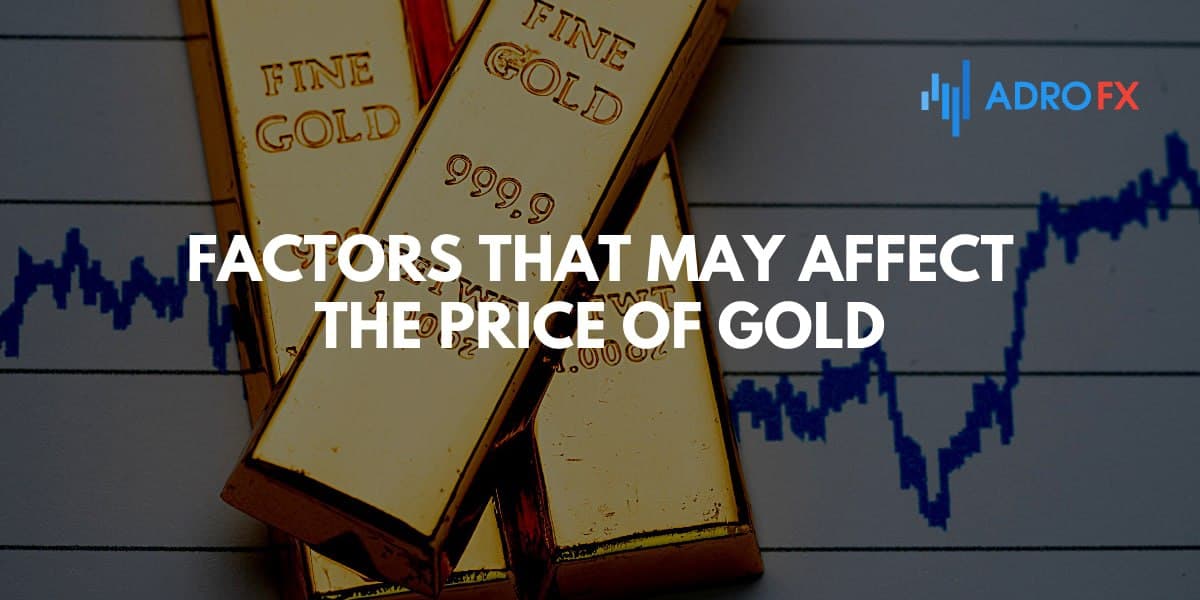
As a rule, traders associate fundamental analysis with the stock market rather than with gold or currencies. While stock market fundamental analysts follow the financial statements of certain companies, gold market analysts track macroeconomic factors, political stability, and competition from investment alternatives to predict prices. Let us have a look at some essential factors that influence the rates. In such a way, we better understand the gold prices future predictions.
- Inflation
Inflation has an effect on the price of gold, but not as much as one might assume. Most novice gold investors believe that if inflation is rising in the U.S., then the price of gold should also go up because more inflation-increased dollars should be given per ounce. However, in the long run, there is no strong correlation between inflation and gold prices. You can see that in the chart below, which shows the evolution of inflation in the U.S. and the price of gold.
This lack of strong correlation can be explained by two reasons:
a) Gold is not a commodity. That is, it is not consumed by industry like oil or ferrous metals, and therefore reacts differently to the purchasing power of the currency than other commodities.
b) In periods of economic and stock market growth, gold has to "compete" for lucrativeness and investors' attention. At the same time, in such periods inflation is usually at a high level.
We should distinguish between inflation, which does not cause the growth of gold prices, from the one, which stimulates it. The criterion is investor confidence. If inflation accompanies a period of growth and optimism about the future, confidence levels are also likely to be very high, making gold a relatively unattractive investment. However, if too much inflation accompanies low confidence and excessive fears, you should expect gold prices to skyrocket.
- Currency fluctuations
Gold, along with the U.S. dollar and other reserve currencies is a reserve market instrument. Therefore, if one currency (e.g. the dollar) depreciates relative to the other reserve currencies while the purchasing power of the other currencies remains, the logical consequence is that gold becomes more expensive relative to the depreciating currency.
The graph shows the inverse long-term relationship between the U.S. dollar index (blue line) and the dynamics of gold prices (orange line).
- The risk of a global recession
War or the threat of war is the most significant (after financial market crises) source of uncertainty for investors. Gold performs best as a safe investment at times when investors are greatly frightened, and war may well cause such conditions in the market. In addition, war is associated with some other contributing factors, including excessive spending, currency printing, political instability, and weakened currencies.
Case in point: the global stock market crash that began on February 20, 2020, during the COVID-19 coronavirus pandemic and subsequently became one of the worst global stock market crashes in history:
- Interest Rates
Gold is sensitive to interest rates because it does not generate current income. Therefore, it is highly sensitive to alternatives in the stock market that offer potential income, such as bonds or even dividend-paying stocks. There is a noticeable, though not perfect, negative correlation - when bond yields are rising, there is a high probability that gold will trend sideways or even downward while declining yields tend to lead to very positive movements in gold prices.
For example, to fight the recession of the early 2000s, the Fed cut interest rates to very low levels, forcing long-term investors to get out of low-yielding bonds and diversify their portfolios with gold. It has provided good support for already rising gold prices. A similar situation has been observed in the most recent period of gold price gains since late 2018.
- Gold supply and demand
The most difficult factor is to assess the impact on the price of the metal. Large investors in gold, including central banks, the IMF, and leading funds, exert considerable influence on the market. The actions of these players can significantly change the demand for gold jewelry and investment instruments.
Accounting for the actions of these major players (and there are dozens of them) is an impossible task for the average private investor who does not have access to the information disclosed by all these players.
To get a general idea of the market balance one should know that most of the demand for gold is more or less evenly distributed between investment instruments and jewelry.
As an example, China and India (with their booming economic growth) have become major purchasers of gold for investment and reserve purposes over the past two decades and have therefore provided an additional impetus to gold prices.
All of the fundamental factors that have a significant impact on the forces of supply and demand can be boiled down to one basic issue: investor fear. By investor, we can mean both key players and small individual investors, while fear refers to the level of confidence (or lack of confidence) in economic growth, political stability, government solvency, and monetary policy failures.
Conclusion: Is Gold a Good Investment?
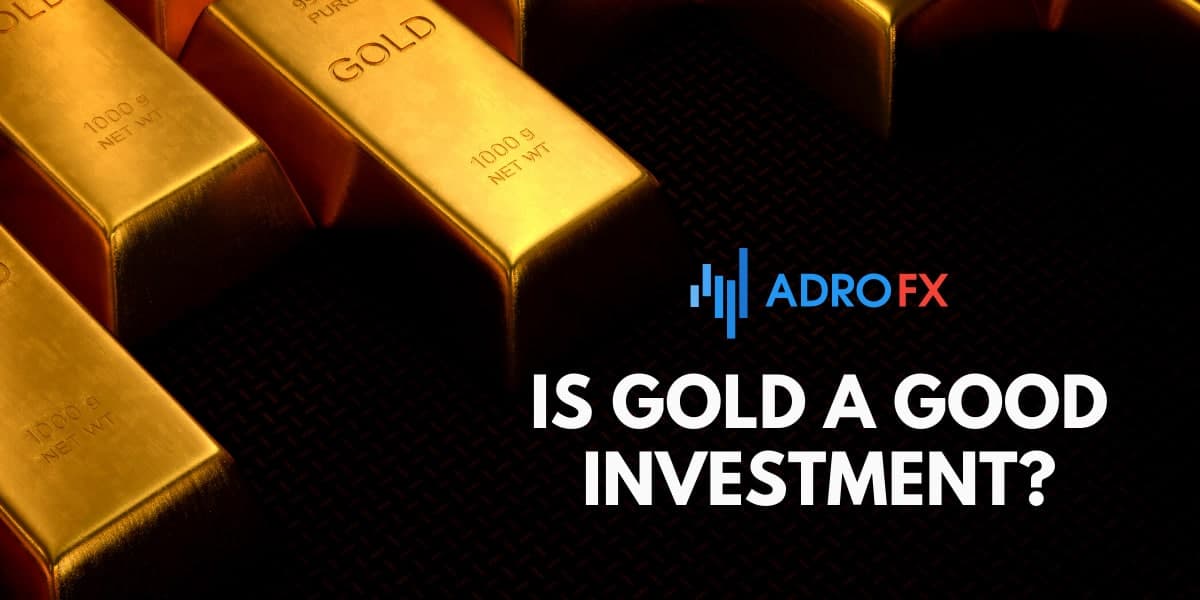
There are three reasons to own gold and include it in your portfolio:
As an investment: when you invest in any asset, you expect a return on that investment. As for gold, the numbers speak for themselves: its price has risen an average of 8 percent a year over the past 15 years, and if we talk about last year, by December 23, the price of gold has risen 23.44 percent. More importantly, gold investments not only yield high returns over the long term but can also grow significantly in times of economic uncertainty.
As a hedge against uncertainty: gold has a negative correlation with other assets. The metal tends to rise when stocks, real estate, and other investment assets fall in value. The value of gold is also internal and not tied to other assets, making it a safe haven in times of crisis. Buying gold protects your hard-earned wealth by acting as insurance against uncertainty.
As a hedge against risks such as Inflation. Inflation weakens currencies and reduces the value of all paper-denominated assets such as stocks, bonds, and bank deposits. On the other hand, the price of gold, because of its finite nature, tends to rise when currencies weaken, so adding gold to a portfolio prevents the erosion of wealth due to inflation. This makes gold the first and main financial insurance for all other investments.
So, you might be wondering whether there are times when you can't own gold.
The answer is no. Gold always plays an important role in any investment portfolio. Not owning gold in a portfolio is a higher risk than owning gold at an inflated price. Gold is the backbone of a diversified portfolio: it shows that we take unpredictable risks that affect the value of our investments.
Gold should be seen as protection against the unpredictability of governments, central banks, and banks and the effects that their actions have on financial markets.
As the most vital form of financial and investment insurance, buying gold now is the smartest decision you can make. Given the growing risks to the global economy, gold looks attractively undervalued and represents a rare buying opportunity.
Gold Price Forecast FAQ
How much will the gold be worth in 2030?
As per Incrementum, the gold price may reach $4,000 in nine years from now.
How much will the gold be worth in 2025?
Gold could be worth more than $3,000 by 2025.
Will the price of gold fall in 2021?
According to almost all of the forecasts we`ve covered in this article, the price of gold is unlikely to drop in 2021.
Is gold a good investment?
Investing in gold is always a good idea since in a world of economic uncertainty and rising global debt, it is regarded as a safe haven asset, offering many benefits that other investments cannot.
How often do gold prices fluctuate?
Gold spot prices change every few seconds during market hours and can fluctuate throughout a day based on breaking news, supply and demand, and other macroeconomic factors.
About AdroFx
Adrofx is an online CFD broker that offers tailored trading features, competitive conditions, and a robust WebTrader platform, Allpips. The AdroFx brand is aiming to deliver excellence which is evident in the services they provide.
